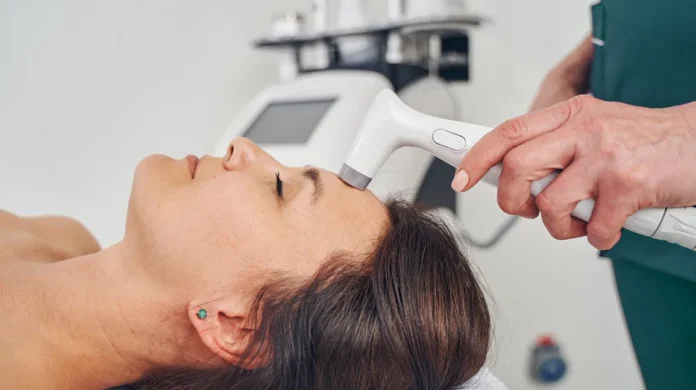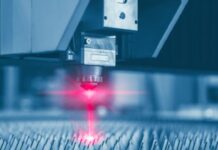Introduction
Skin tightening machines are available in some technologies. Radiofrequency skin tightening machines, laser skin tightening procedures, and other devices like ultrasound have been used to tighten loose skin. Although you can find many questions regarding their working principle, this article will answer all of them easily.
Skin tightening machines are available in several technologies.
Many different technologies are available, each with its strengths and weaknesses.
- The most common machine uses radiofrequency (RF) energy to heat the skin and stimulate collagen growth. RF machines are usually used on the face and neck to treat wrinkles, but they can also be used in other body parts. The RF device heats deep layers of skin without damaging surface layers, resulting in minimal damage and no downtime. This makes it a good option for patients who want to tighten their skin before going out for an event or vacation where they want to look their best without having any visible signs that surgery has been performed recently.
- Another technology uses intense pulsed light (IPL) energy from a laser source; this method is not invasive like surgery but can take longer than RF treatments because IPL treatments aren’t as effective at penetrating deep into underlying structures such as muscles or fat deposits.
Radiofrequency skin tightening procedure
The radiofrequency skin tightening procedure is a non-surgical, non-invasive, non-ablative and non-thermal procedure. It uses radiofrequency waves to heat the collagen in your skin. This creates new collagen and lifts your skin without damage to the surrounding tissue.
The procedure takes just 20 minutes and can be done under local anaesthetic or with sedation if you’re nervous about the pain. It works best on people with good muscle tone and who don’t smoke or drink alcohol regularly – but if you want to try it out, we won’t stop you!
Laser skin tightening procedure
The laser skin tightening procedure works by delivering concentrated energy to the dermis of your skin. The energy stimulates collagen production and increases blood flow to rehydrate and tone the tissue. This causes a tightening effect in your skin that lasts many months after treatment.
For most people, laser skin tightening is completely painless and takes only about an hour to complete. However, it may be uncomfortable at times because of the sensation from the heat being applied to your face or neck area during treatment sessions.
How to use these devices
You can use these devices at home, but some require a doctor’s prescription. For example, ThermiVa is FDA-approved for treating vaginal dryness, atrophy and thinning in postmenopausal women.
However, if you have questions or concerns about the safety and efficacy of any device you are considering using for cosmetic purposes, consult your doctor before making a decision.
Depending on what part of the body you’re treating with these devices, there are different treatments available:
- Thighs: LipoSelection uses radiofrequency waves to heat fat cells from the inside out; when they burst open, they release their contents – including water – into the surrounding tissue. This helps tighten skin while reducing cellulite appearance by around 50%. The procedure takes around 20 minutes per leg (40 minutes total), and no anesthesia is required!
- Arms: LipoSculpture uses ultrasound energy to target stubborn fat deposits under arms without surgery or recovery time needed afterwards (the average cost per session ranges between $1500-$3000 depending on where it’s done).
Conclusion
A skin tightening machine works by heating the collagen in your skin. This causes the collagen to contract, which in turn causes your skin to tighten. The heat can be applied in several ways, including radiofrequency, laser and ultrasound. The heat is applied to the skin in a controlled way so you don’t get burned or damaged.









![Anso FG Reviews: UPDATED 2024 [ansofg.com] Anso FG Reviews UPDATED 2024 [ansofg.com]](/wp-content/uploads/2023/12/Anso-FG-Reviews-UPDATED-2024-ansofg.com_-100x70.png)








